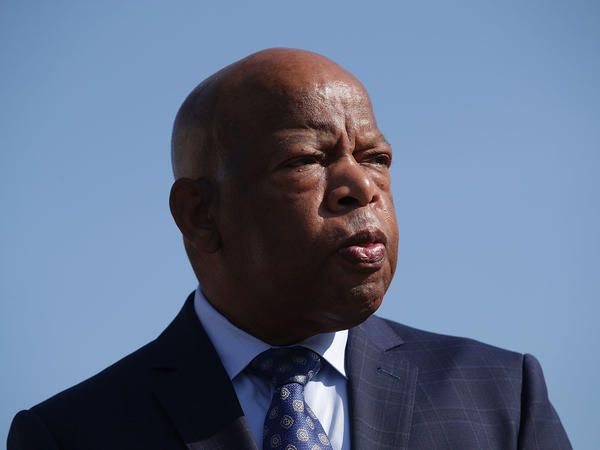The legacy of civil rights activist and Democratic congressman John Lewis

A few minutes every morning is all you need.
Stay up to date on the world's Headlines and Human Stories. It's fun, it's factual, it's fluff-free.
John Lewis, a democratic representative of Georgia and civil rights activist who spent a lifetime fighting for racial justice in the United States died of pancreatic cancer at the age of 80 on Friday.
One of the original 13 Black and white Freedom Riders to protest against segregated interstate travel in Southern states in 1961, Lewis remained on the frontlines staging demonstrations against the Jim Crow laws of segregation in public spaces.
He was one of the founders of the Student NonViolent Coordinating Committee in April 1960. This was a civil rights organization led entirely by young students that held lunch counter sit-ins against segregation with the support of Dr Martin Luther King.
From 1960 to 1966 alone, Lewis was arrested 40 times and beaten brutally and repeatedly by policemen and white supremacists. During the Freedom Ride, he was beaten until he was lying unconscious in a pool of blood near a bus stop in Montgomery.
In April 1965, Lewis and other civil rights activists organized one of the most historic marches in American history, a march from Selma to Montogomery in Alabama. During the march, the activists were accosted by a mob of state troopers in riot gear who fired tear gas, and used bullwhips and rubber tubing wrapped in barbed wire to beat the protesters.
Lewis’s skull was fractured after he was hit with a club and knocked to the ground. He tried to get back up, only to be knocked down again on the day that came to be known as “Bloody Sunday” in American history.
Four months after this brutality was meted out to peaceful activists, then-President Lyndon B. Johnson passed the Voting Rights Act on August 6, 1965.
Of the beating he endured in Selma, Lewis later said, “I thought I was going to die.”
However, he remained strangely hopeful, both of his struggle against racial injustice and later with pancreatic cancer, to which he eventually succumbed.
“I have been in some kind of fight — for freedom, equality, basic human rights — for nearly my entire life”, he said on June 29, while announcing his illness.
The struggle for Black rights continues
Today, more than 50 years after Bloody Sunday, America is once again engulfed in demonstrations against racial injustice faced by Black people in the nation, especially in law enforcement.
The nation was galvanized into action after Derek Chauvin, a white former police officer, was seen on video killing George Floyd, a Black man, by pushing his knee down Floyd’s neck for eight minutes and 46 seconds.
When Lewis saw the video, he broke down.
“It was so painful, it made me cry,” he told CBS This Morning. “People now understand what the struggle was all about. It’s another step down a very, very long road toward freedom, justice for all humankind.”
The recent Black Lives Matter movement, which Lewis’s illness prevented his participation in, gave him hope.
“This feels and looks so different,” he said. “It is so much more massive and all inclusive. There will be no turning back.
“It was very moving, very moving to see hundreds of thousands of people from all over America and around the world take to the streets — to speak up, to speak out, to get into what I call ‘good trouble.’”
However, his death and his enduring legacy begets the question – How much has the state of racial injustice really changed in today’s America?
Segregation was outlawed in 1964 with the passage of the Civil Rights Act by President Lyndon B Johnson, but despite the country becoming more diverse as a whole, many American communities still remain segregated by race.
The Voting Rights Act was passed on August 6, 1965 and yet voter suppression policies disproportionately affect Black Americans, raising questions about the state of democracy in America.
In a 2018 poll conducted by Public Religion Research Institute (PRRI) and The Atlantic, nine percent of Black respondents said that they were told they didn’t have proper identification to vote as compared to three percent of white respondents. Fifteen percent of Black respondents stated they faced difficulty finding polling places on Election Day as opposed to five percent of white respondents.
Black Americans remain deeply disadvantaged in key areas of welfare such as housing, education, median household income, home ownership and life expectancy rate.
Despite making up less than 14% of the population, Black Americans had the highest unemployment rate at 6.5% in the fourth quarter of 2018 compared to the unemployment rate of white Americans at 3.1%.
In some majority Black neighborhoods, unemployment was as high as 30%.
Median annual income in Black households is US$53,000 compared to US$82,000 in white households. The difference is exacerbated when majority black and majority white neighborhoods are compared. For example, in Minneapolis-St.Paul, median household income in majority white neighborhoods is double that of majority Black neighborhoods.
Although imprisonment rates have declined across all racial and ethnic groups in America, the incarceration rate of Black Americans is more than five times higher than that of white Americans, despite the former making up for less than a quarter of American population.
In 2018, there were 2,272 inmates in prison per 100,000 Black men compared to 392 inmates per 100,000 white men.
Last Saturday, federal troops in Portland shot a peaceful protester in the head with impact munition, fracturing his skull, an injury much like the one suffered by Lewis in Selma.
During the 1960’s, many Black Americans chose direct confrontation with the state and law enforcement, doing away with peaceful protests, frustrated as they were by the lack of material change in America’s racial inequality. This soon led to the popularization of the phrase “Black Power”.
However, despite suffering repeated blows at the hands of law enforcement, Lewis remained firmly on the path of non-violence.
A fierce civil rights activist who later became known for peace
After he was voted into the House of Representatives as a representative of Georgia, he came to be known as the “Conscience of Congress”, always voting against America’s military spending.
Despite this more peaceful tone later in life, when he was younger, his speeches were often fierce.
During the August 1963 March on Washington for Jobs and Freedom, a march known in history for Dr. Martin Luther King’s ‘I Have a Dream’ speech, Lewis also spoke passionately to the crowd.
“By the force of our demands, our determination and our numbers,” he said, “we shall splinter the segregated South into a thousand pieces and put them together in the image of God and democracy. We must say: ‘Wake up, America. Wake up!’ For we cannot stop, and we will not and cannot be patient.”
His original speech was more cutting, notably for calling President Kennedy’s Civil Rights Bill “too little, too late.” He questioned, “Which side is the Federal Government on?” It also described some political leaders as “cheap” and called on the protesters to march “through the heart of Dixie, the way Sherman did."
However, he was asked to remove these phrases by Dr King and other civil rights activists for fear of offending the Kennedy administration and the conservatives, and stalling much-needed civil rights legislation.
Today, important national policing legislation by both Democrats and Republicans has been stalled in the Senate due to their inability to reach a bipartisan consensus, despite the chants of the peaceful protesters and the much criticized actions of the non-peaceful ones.
Still, Lewis remained hopeful of the change that could be brought about by the current Black Lives Matter movement, his motto always being that one should get into “good trouble.”
In 2018 he wrote on Twitter, “Do not get lost in a sea of despair. Be hopeful, be optimistic. Our struggle is not the struggle of a day, a week, a month, or a year, it is the struggle of a lifetime. Never, ever be afraid to make some noise and get in good trouble, necessary trouble.”
A documentary film, titled ‘John Lewis: Good Trouble’ was released this month.
Have a tip or story? Get in touch with our reporters at tips@themilsource.com




Comments ()